Exchange Server 2010 SP1 Beta Hosting Deployment... Part #1 - The First Look
For those who are planning to move from HMC to Exchange Server 2010 SP1 Beta Hosting deployment or if you are interested in doing a multi-tenant Exchange environment, you should definitely download the bit and give it a try. It will give you a sense of how the next hosting model is going to look like and what are the things in HMC that is in there and has been improved over HMC and what's not.
What I am going to do here is to briefly talk about how to install Exchange Server 2010 SP1 in hosting mode and on a high level what are some of the things being enabled when you use this switch compared to a normal On Premise Exchange Server 2010 installation (meaning, not hosting mode).
Installing Exchange Server 2010 SP1 beta in the hosting mode is actually pretty straightforward. After you have all the Exchange Server 2010 pre-req installed, and you have installed your Domain controller and created the new forest, you run the Exchange setup.com with a /hosting switch. Something like the following,
setup.com /mode:install /role:MB,CA,HT /organizationName:ConsolidatedMessenger /hosting
As you can see, I am installing CAS and Hub Transport on the same box (it is a test box), but note the hosting switch at the back. It is important that you have that. You also realize that when you do a setup.com /help:install, you won't find the /hosting switch being listed but it is there. Next, you just let it run and wait for the installation to complete.
Once it is installed, let me point out a few obvious things that is there that you won't see in a normal on premise Exchange deployment.
1. Sample Service Plan templates on the CAS Servers.
The files are located in <Exchange Installation Path>\Exchange Server\V14\ClientAccess\ServicePlans on the CAS server. Here is a screenshot.
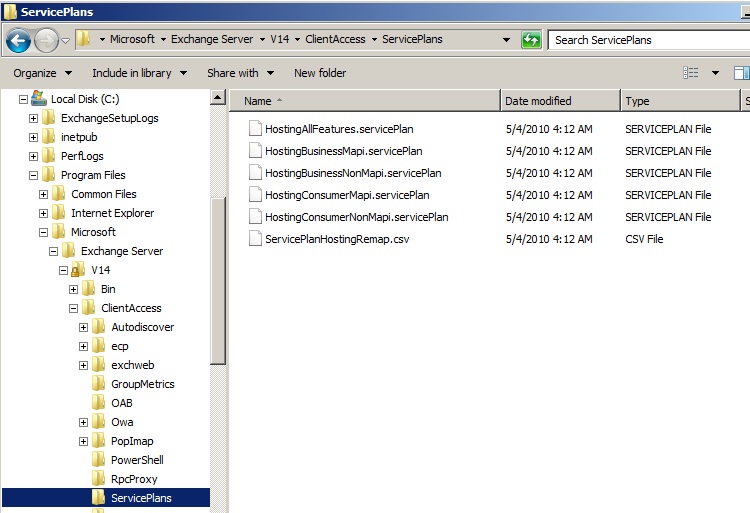
You can see there are 2 types of files here. One is the ServicePlan templates that consists of the configurations of all the options that you can apply to a mailbox and more, of course. So, think of it to be very similar to User Plan in HMC.

Then you have a CSV file, ServicePlanHostingRemap.csv that map the service plan templates to an offer and program ID.
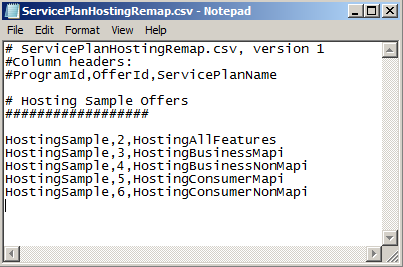
I personally find it interesting why this isn't stored in the Active Directory as well. It would have been easier instead of having the need to manually ensure that all the files are the same in all the CAS servers.
2. Configuration Container
The configuration container definitely looks a bit different. Under the OU=Microsoft Exchange, it has an additional container called 'ConfigurationUnits'. It is empty at the moment but it won't be if a new organization is created. We will talk about that more when I talk about how to create tenant organization.
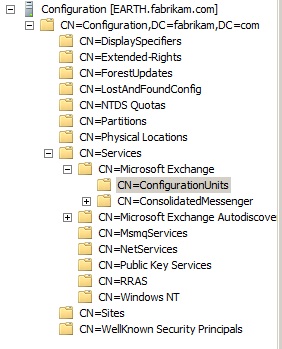
3. Additional OU in Default Naming context
Under the Domain Naming context, you can see there is an additional OU created. This OU is very similar to what the Hosting OU we have in HMC. This one is called 'Microsoft Exchange Hosted Organizations'. The container is obviously empty when you first create install the Exchange environment.
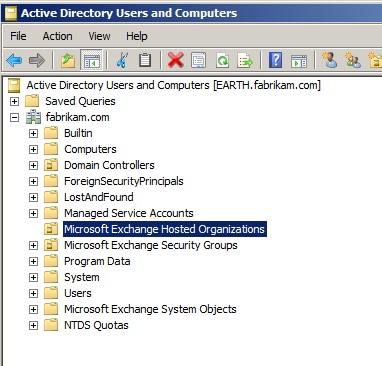
4. No Exchange Management Console.
That's right, only the powershell. So, if you are not a powershell person, I think it is time to be one because no more GUI for you. Will that change when SP1 RTM? I don't know but for most parts, I really don't think there is a need for GUI because most hosters will have their own Control Panel and most hosters have so many companies and mailboxes (for example, some hosters has like 2-3 millions objects), GUI just don't do too well in those scenarios. If you try to launch MMC and do the add-in, you will find the following,
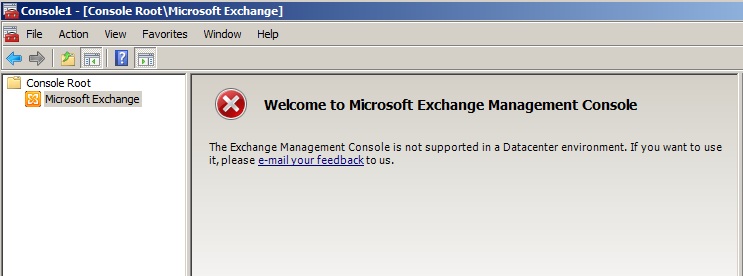
See, it clearly said, the Exchange Management Console is not supported or in a datacenter environment.
5. Different Cmdlets and Cmdlet switches
With the hosting swtich, you will realize that you have additional cmdlets. Yeah, you have seen them in the Hosting Deployment CHM file, right? Let me give you an example the difference,
This is what I get on a On Premise Exchange 2010 SP1 installation,
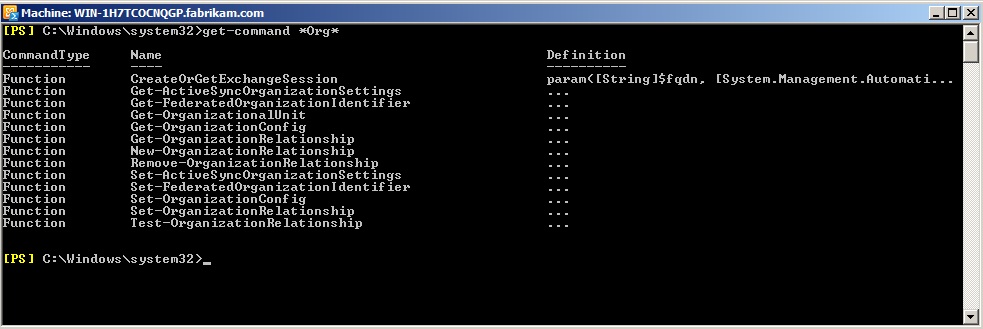
This is what I get on a server installed with /hosting switch
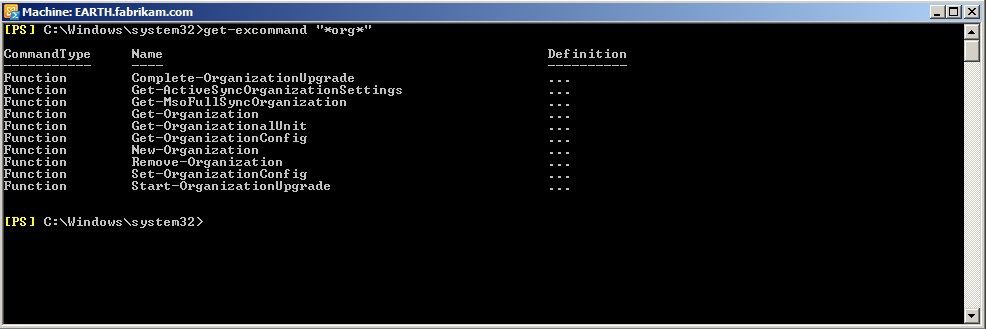
So, you can see that some cmdlets have been removed and new one like New-Organization has been added.
6. Additional Security Groups
You may also see some security groups created that is not in the normal on premise Exchange environment. For example, Exchange All Hosted Organizations security group.
Now, I am only pointed out the obvious one right now. I will try to blog a little bit more on individual components as we go. So, what do I think about Exchange Server 2010 SP1 Hosting Deployment so far? I think the installation is definitely smoother than I expected and I like what I am seeing. There are definitely some questions remain unanswered at the moment but hey, it is a beta bit still but the beta bit has surely given me good feeling.
Next, I will talk about creating a new tenant organization, mailboxes, contacts and etc. etc.. We will go over a bit on how is tenant isolation done in Exchange 2010 SP1 beta, RBAC, OAB and Address List stamping and why I think it is better compared to what we have now in HMC.
Continue Reading...
Exchange Server 2010 SP1 Beta Hosting Deployment
https://blogs.technet.com/b/provtest/archive/tags/hosted+exchange+server+2007/